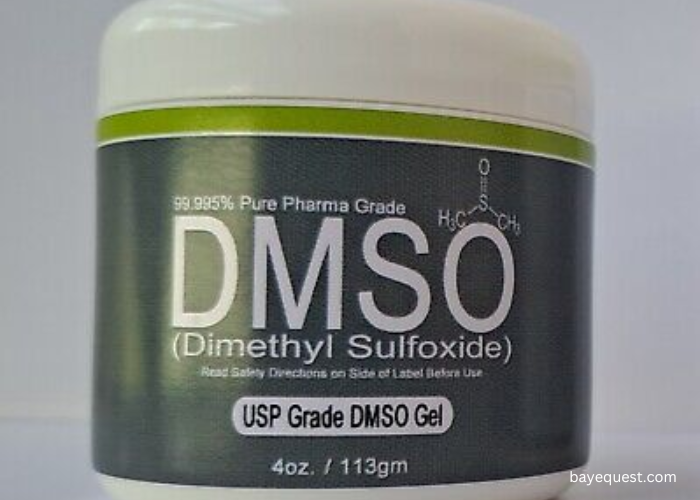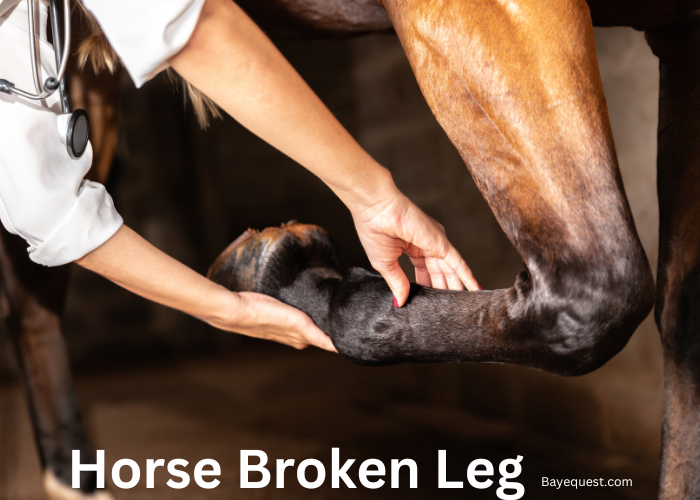DMSO is a well-known name in horse care, but what exactly makes it so popular?
This powerful substance has been used for years, yet many horse owners are still unsure about its full potential.
Whether you’ve heard about it or are just getting started, understanding its role can be a game-changer in equine health.
Knowing what it does and how it works can help you make better decisions for your horse’s care.
Keep reading to find out what DMSO is used for in horses and why it’s a staple in equine management.
What is DMSO Used for in Horses? Key Takeaway
DMSO is used in horses to reduce inflammation, ease pain, and speed up healing. It’s applied to treat joint issues, soft tissue injuries, and wounds. DMSO also helps other medications absorb more effectively and can be used for respiratory and neurological conditions. It also has antimicrobial properties and promotes faster recovery.
What is DMSO?
DMSO, or Dimethyl Sulfoxide, is a chemical compound originally developed as an industrial solvent.
Over time, researchers discovered its unique properties that make it useful in medicine, particularly for its ability to penetrate skin and tissues.
In veterinary care, DMSO is commonly used as an anti-inflammatory and pain-relieving agent. It reduces swelling and inflammation, especially in horses.
DMSO can also help other medications penetrate deeper into the body, enhancing their effectiveness.
It’s versatile, fast-acting, and valued for its many benefits in treating a variety of equine conditions.
How Does DMSO Work?
DMSO works by easily penetrating the skin and tissues, allowing it to reach deeper areas of inflammation or injury.
Once applied, it acts as a powerful anti-inflammatory, reducing swelling and discomfort in the affected area.
DMSO also has analgesic (pain-relieving) properties. It treats pain caused by injuries or chronic conditions like arthritis in horses.
One of its key features is its ability to act as a carrier. This means DMSO can help transport other medications, such as antibiotics or steroids, into tissues more effectively.
Its antioxidant properties also help neutralize harmful free radicals, further aiding in healing and recovery.
How to Apply DMSO
When applying DMSO to a horse, follow the right steps to ensure safety and effectiveness.
First, wear gloves. DMSO can penetrate your skin just as easily as it does the horse’s, so you want to avoid direct contact.
Next, make sure the area you’re treating is clean. Dirt, oils, or other contaminants can be carried into the horse’s body along with the DMSO.
Wash the area with a mild soap and water, and dry it thoroughly before applying the product.
Apply the DMSO with a clean cloth, sponge, or brush. Use only the amount recommended by your vet, and spread it evenly over the affected area.
It will absorb quickly, so there’s no need to rub it in aggressively.
After applying, keep an eye on the horse for any signs of irritation. If you notice any redness or blistering, stop use and consult your vet.
Finally, store the DMSO in a cool, dry place away from direct sunlight, and always use it under the guidance of a veterinarian.
Common Uses of DMSO in Horses
The most common uses of DMSO for horses are:
Treating inflammations and swellings
DMSO is often used to treat inflammation and swelling, like excessive granulation tissue in horses.
When applied to areas of injury or strain, it quickly reduces the buildup of fluids and helps bring down swelling.
This makes it helpful for conditions like joint inflammation, soft tissue injuries, and laminitis.
Pain relief
For pain relief, DMSO works by blocking pain signals at the site of injury. It can penetrate deep into the tissues, helping to ease discomfort caused by both acute and chronic conditions.
This makes it a valuable treatment for musculoskeletal pain, especially in performance horses.
Wound healing
DMSO also plays a role in wound healing. Its ability to increase blood flow and reduce inflammation helps speed up the healing process.
It’s often applied to minor cuts and abrasions to promote faster recovery and reduce the risk of complications.
Respiratory issues
In some cases, DMSO is used for respiratory issues in horses. It can be administered through inhalation to help reduce inflammation in the airways.
This is useful for horses with chronic respiratory conditions like heaves, as it helps improve breathing.
Neurological disorders
DMSO can also be used to treat certain neurological disorders in horses. It reduces swelling in the nervous system, which is crucial when dealing with head injuries or spinal cord trauma.
Its antioxidant properties help protect nerve cells, which can aid in recovery from these conditions.
Inhibition of microbial growth
Lastly, DMSO has the ability to inhibit microbial growth. It has antimicrobial properties that help prevent infection.
It’s a useful treatment for wounds or other injuries that are at risk of becoming infected. This adds another layer of protection during the healing process.
Benefits of DMSO
DMSO offers several key benefits for horses.
One of the main advantages is its fast-acting relief for inflammation and pain.
It works quickly to reduce swelling and discomfort, making it a go-to treatment for injuries and chronic conditions.
Another benefit is its versatility. DMSO can be used for various issues, including joint problems, wounds, respiratory conditions, and even neurological disorders.
This makes it a valuable tool in veterinary care, providing a broad range of treatments from a single application.
DMSO is also a carrier, which enhances the effectiveness of other medications. When used with antibiotics or steroids, it helps these treatments penetrate deeper into tissues.
Its antimicrobial properties are another major benefit. DMSO helps prevent infections, particularly in wounds or injuries.
Lastly, DMSO is cost-effective. Compared to other treatments, it offers a wide range of benefits at a relatively low cost, making it an accessible option for horse owners and veterinarians alike.
Precautions and Side Effects of DMSO in Horses
When using DMSO on horses, there are a few precautions to keep in mind.
First, it’s powerful and absorbs quickly, so you need to wear gloves when handling it.
DMSO can carry anything on the skin, like dirt or chemicals, straight into the body, which could lead to unwanted reactions.
One of the side effects you might notice is a strong, garlic-like smell coming from the horse’s breath or sweat after application.
This is harmless but can be surprising if you’re not expecting it.
Some horses might experience skin irritation or blistering where DMSO is applied, especially if it’s used in high doses or too often. It’s best to test on a small area first to avoid any serious skin reactions.
Using too much DMSO or combining it with other medications without veterinary guidance can also cause issues.
Always consult a vet for the right dosage and application to avoid complications.
Lastly, horses can be sensitive to the product, so keep an eye on them after application.
If there’s any sign of discomfort or allergic reaction, stop using it and reach out to a vet.
10 Things You May Not Know About DMSO Use in Horses
1. It wasn’t always intended for medical use
DMSO wasn’t always intended for medical use. It started as an industrial solvent.
It was later discovered that it had unique properties for treating inflammation and pain, and that’s how it made its way into veterinary care.
2. DMSO is a powerful carrier for other medications
DMSO is also a powerful carrier. This means it helps other medications penetrate deeper into tissues.
When combined with antibiotics or steroids, it makes these treatments work more effectively and quickly.
3. It’s more than just an anti-inflammatory
But it’s more than just an anti-inflammatory. It also has antioxidant properties that help protect cells from damage.
This makes it useful for more than just reducing swelling. It helps promote healing on a deeper level.
4. DMSO is a prohibited substance in some sports
One thing to note: DMSO is a prohibited substance in some sports. That’s because it can mask injuries or enhance performance by reducing pain.
If you’re competing with your horse, check the rules before using it.
5. It can be used in inhalation therapy for respiratory issues
DMSO can be used in inhalation therapy. It helps horses with respiratory issues by reducing inflammation in their airways.
Horses with chronic breathing problems like heaves can benefit from this treatment.
6. DMSO is used to treat neurological injuries
It’s even used to treat neurological injuries. DMSO reduces swelling around the spinal cord or brain, helping horses recover from serious injuries like head trauma or spinal issues.
7. It can produce a strong odor
One side effect that surprises people is the strong odor. After using DMSO, horses might have a garlic-like smell on their breath or sweat.
It’s harmless, but it can be a bit off-putting.
8. It has antimicrobial properties
DMSO also has antimicrobial properties. This means it can help prevent infections in wounds or injuries, which is another reason it’s so useful in equine care.
9. DMSO can be absorbed through gloves (and human skin)
Be careful when applying it, though. DMSO can be absorbed through gloves and human skin.
If you’re not careful, it can carry any contaminants on your hands straight into your horse’s body.
10. DMSO use in horses hasn’t been studied extensively
Finally, while DMSO is widely used, it hasn’t been studied extensively in horses.
Most of what we know comes from practical use, not long-term research. That’s why it’s always a good idea to use it under the guidance of a vet.
Read also: Ace for Horses.
Is DMSO Safe Long Term?
The long-term safety of DMSO in horses isn’t understood, mainly because there hasn’t been extensive research on its prolonged use.
While DMSO is commonly used and effective for short-term treatments, its long-term effects are less clear.
Some horses may tolerate it well over time, but repeated or high-dose use can lead to issues like skin irritation, blistering, or allergic reactions.
Because DMSO is a strong carrier, there’s also the risk that it could introduce harmful substances into the horse’s body if not applied carefully.
Overuse or improper application might cause complications, especially if combined with other medications.
For these reasons, it’s best to use DMSO under veterinary supervision.
Read also: Ketamine in Veterinary Medicine.
DMSO Uses for Horses: Conclusion
DMSO is a versatile and effective treatment for many conditions in horses. It helps reduce inflammation, relieve pain, and promote faster healing.
Whether it’s used for joint problems, wounds, or respiratory issues, DMSO is a valuable tool in equine care. However, you need to use it carefully and under the guidance of a veterinarian.
While DMSO offers many benefits, it can also have side effects if not handled properly. Always consult with your vet to ensure the correct dosage and application.
With proper use, DMSO can be a helpful aid in keeping your horse healthy.








